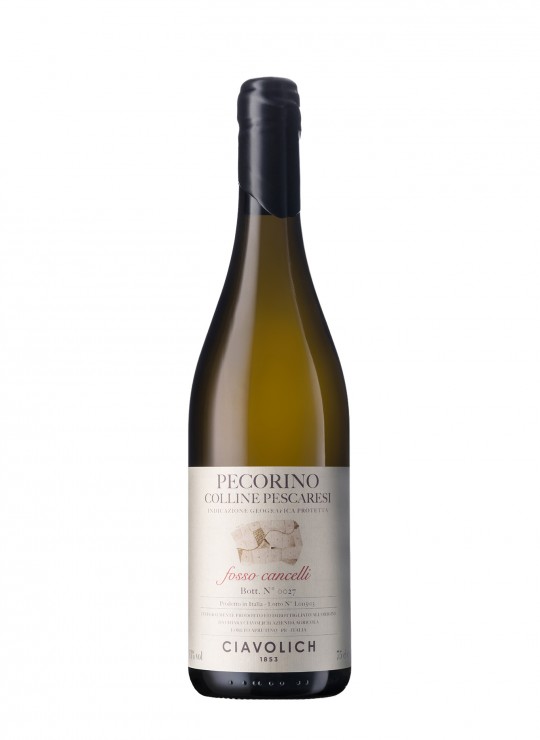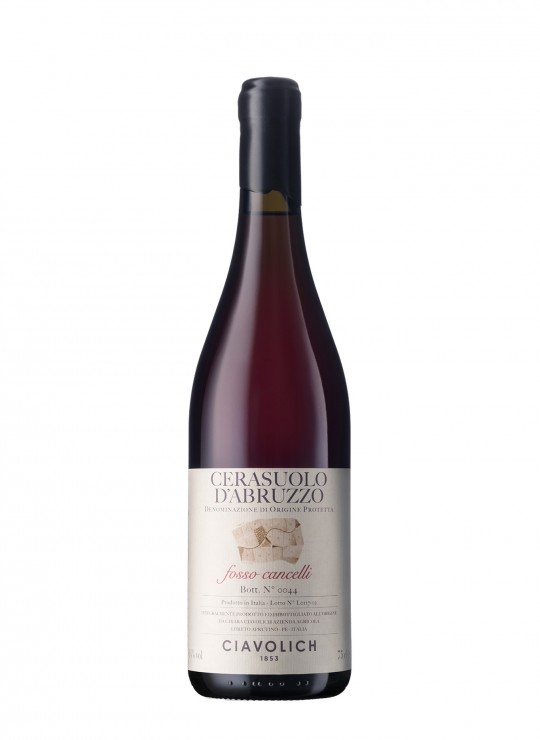ENGLISH
Chiara Ciavolich and Fosso Cancelli wines: creative touches of tradition
The vineyards at Loreto Aprutino where Chiara Ciavolich grows the grapes for her Fosso Cancelli wines lie adjacent to the legendary estate of Valentini, source of a grand Montepulciano d’Abruzzo and the Trebbiano d’Abruzzo that has often been rated as Italy’s greatest white wine. But Chiara takes it all in stride, showing no sense of envy or rivalry or wish to imitate the wines of her illustrious neighbor. “Francesco Paolo Valentini is a good friend and we respect each other but, of course, we have somewhat different ways of making wines.”
Chiara goes her own way with the energy and enthusiasm that she showed after she took over the estate from her father in 2004 o 2003?. She created the Fosso Cancelli line, from the estate’s oldest vineyards, starting in 2007 with Montepulciano d’Abruzzo, and following up over the years with Trebbiano d’Abruzzo, Pecorino and Cerasuolo d’Abruzzo. The line is distinguished by the use of vetrified cement vats, terracotta amphorae and wooden barrels and studied craftsmanship that respects tradition with creative touches that are distinctly avant-garde.
Fosso Cancelli Montepulciano d’Abruzzo DOP. Select grapes are hand harvested, crushed in an ancient press and transferred to cement vats to ferment at natural temperatures. The wine is racked and returned to the same vats to mature for a year before bottling and aging for at least three more years.
Deep ruby red with violet reflections, the floral aromas have notes of red fruit and peppery spices with balsamic hints of licorice, chocolate and tobacco. Flavors are broad and persuasive in a wine of ample structure and depth characterized by soft and evolved tannins and a long, smooth finish. Chiara defines her Montepulciano as mysterious because there is none other quite like it. Among an array of food matches, Chiara puts special emphasis on charcoal grilled lamb.
Fosso Cancelli Trebbiano d’Abruzzo DOP. Select grapes from a vineyard planted in 1965 are pressed and fermented using a “pied de cuve” prepared with the ripest grapes before the harvest. Since 2018 Trebbiano Fosso Cancelli is vinified and matured partly in terracotta amphorae and partly in Slavonian oak barrels.
The wine, of deep straw yellow color, has enticing aromas dominated by notes of citrus, wild flowers and herbs. On the palate it is fresh and ample, a white that transmits energy with a savory lingering finish.
Food suggestions cover a gamut of dishes with ingredients from land and sea, taking in spaghetti alle vongole, pasta with with sweet and piquant peppers and fava beans with fresh percorino.
Fosso Cancelli Pecorino Colline Pescaresi IGP. Select grapes are passed through a small crusher and ancient press and fermented in part in terracotta amphorae and in part in used French oak tonneaux using a “pied de cuve” of the ripest grapes before the harvest. The fermented wine is racked and matured on its noble lees in 15-hectoliter Slavonian oak barrels and in terracotta amphorae for about two years.
The wine of deep straw yellow color exudes delicate scents of peach, citrus, ginger and above all elderflower. Smooth and sapid on the palate with acidic-mineral notes that add zest to a bright finish that invites repeated sipping.
Recommended with fresh seafood and citrus combinations and above all pasta alla mugnaia, hand rolled noodles in long strands curled around various sauces and ragouts.
Fosso Cancelli Cerasuolo d’Abruzzo DOP. Rigorously selected Montepulciano grape bunches are destemmed and pressed and left in contact with the skins for 12 to 24 hours in small concrete vats to ferment. A fraction of the must is removed from the bottom of the vats in a classic step known as salasso or “bloodletting” and transferred to terracotta amphorae where it continues fermenting at natural temperatures. Refinement continues on the noble lees until bottling in the first days of spring.
The wine of deep cherry hue has fruity aromas reminiscent of pomegranate and wild berries and flavors that are full and round, intense and persistent with a “chewy” quality on the finish.
A wine of enviable versatility, Chiara recommends it with the fish soup known as brodetto vastese and the fried dumplings known as pallote cacio e uova made with cheese, eggs and tomato.







